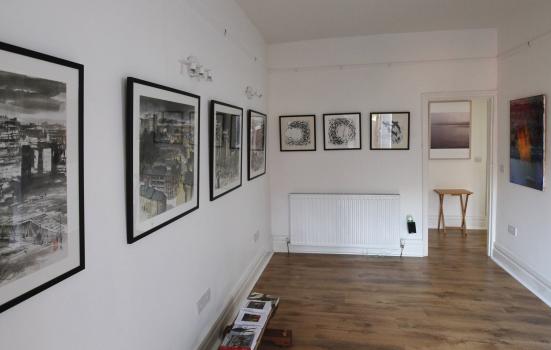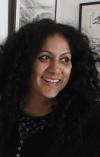A new gallery for visiting international artists has recently opened in a terraced house in South Shields in the north east of England. Padma Rao tells the story.

The decision to leave Arts Council England (ACE) after eight years felt like coming out of a bubble. I felt as if I was being let loose on the streets for the first time on my own. This was a time when economic recession was just around the corner. Cuts were imminent and people were planning their own safety nets. The question I was asking myself was: “How could I continue to remain inspired, to do what I believed in and to enable the richness of diverse arts to be experienced by wider communities.”
I then attended the National Arts Festival in Grahamstown, South Africa as part of an ACE Sustained Theatre delegation where I met with many artists from diverse backgrounds. The seed of collaborating with artists globally was planted. The concept was further enhanced during time I spent in India on the Powerbrokers Cultural Leadership Programme looking at arts development at an international level and learning new ways of working that I could bring back and develop in the UK. Those four months of international placement at Sanskriti in Delhi provided a crucial incubation period to observe the creative approaches by artists from America, Brazil, Chile, South Africa, Sweden, China and India. My curiosity about how the recession impacted on the arts in India seemed a little out of place as the arts sector there operated on a completely different model. Far from the highs and lows of grants and funding, there was a far richer relationship between artists and philanthropists. Suddenly, the world was smaller and the north east of England was a dot on the map. But how to join the dots?
I did not even know if a promising conversation would mature into a meaningful long-term relationship
By the time I returned from India I found that the UK cultural landscape was deep in the thick of economic sanctions and my experience of international arts was faced with a new challenge of finding a suitable context to play with. I had come home with a new dream. But, it was not for another two years that this dream was finally realised, in the shape of an art studio hosting artists’ residencies and bringing local communities in contact with a rich and diverse creative excellence from various parts of the world.
The studio is a terraced two-bedroom flat that acts as a gallery and working studio as well as a residency space for visiting artists. Based in a residential area in a small town, South Shields is like any other place. It is faced with the issues of unemployment, poor health, low education among young people and low cultural and artistic engagement within the local communities. But paradoxically, there is a thriving art centre, the Customs House, that secured a major grant from ACE to engage local communities in the arts over a three-year period, an established history of migration that brought a Yemeni community into the town and a deep sense of pride about being local, yet welcoming the outsiders.
The refurbishment and renovation of the flat provided a good ground for consultation and testing the temperature about ‘artists living next door’ among the local residents. The idea of an international artists’ residency was gently introduced and discussed. The neighbours welcomed the concept and were delighted to share a street with the visiting artists. During this initial phase, local community groups, residents and artists were invited to visit the studio as a way of introducing them to the art space. Local councillor Bob Watters, who sadly passed away recently, was very supportive as he saw it as an excellent vehicle for community engagement in the arts.
Was there a road map for this? How long did it take to realise this vision? My reply is that the biggest lesson has been around establishing relationships with artists and arts organisations from abroad. International relationships take time to mature. The development of the studio has been relatively easy, but working around the different methods of engagement, communication styles, expectations and cultural differences meant that at times I did not even know if a promising conversation would mature into a meaningful long-term relationship. One is always at the risk of losing the entire project due to small misunderstandings. High levels of communication skills and interpersonal skills have been crucial.
The mayor of South Shields formally launched the studio and the International Residency Programme called ‘Kalashram’ in October last year. The residency programme is developed in partnership with, and with sponsorship support from, Everything Different, a brand development agency based on Tyneside. The first exhibition is the work of nine artists, including Samina Jamshed from Pakistan. In March there will be an exhibition of photographs by Matthew Page about the plight of tribes of the Omo Valley in Ethiopia who are faced with extinction due to a major hydro-electric construction of a dam. The visiting artists planned for the future will come from Minneapolis, New York, Pakistan and India.
Padma Rao is Co-Director of ArtsConnect CiC.
artsconnectuk.wordpress.com




